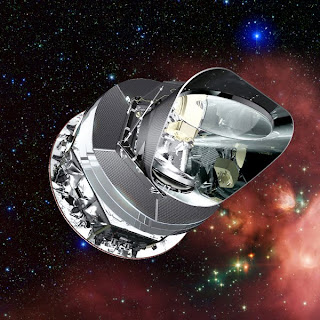Planck Sees Light Billions of Years Old
 The Planck space telescope has begun to collect light left over from the Big Bang explosion that created our universe. The mission, which is led by the European Space Agency with important participation from NASA, will help answer the most fundamental of questions: How did space itself pop into existence and expand to become the universe we live in today? The answer is hidden in ancient light, called the cosmic microwave background, which has traveled more than 13 billion years to reach us. Planck will measure tiny variations in this light with the best precision to date.
The Planck space telescope has begun to collect light left over from the Big Bang explosion that created our universe. The mission, which is led by the European Space Agency with important participation from NASA, will help answer the most fundamental of questions: How did space itself pop into existence and expand to become the universe we live in today? The answer is hidden in ancient light, called the cosmic microwave background, which has traveled more than 13 billion years to reach us. Planck will measure tiny variations in this light with the best precision to date.The mission officially started collecting science data today, Aug. 13, as part of a test period. If all goes as planned, these observations will be the first of 15 or more months of data gathered from two full-sky scans. Science results are expected in about three years.
Read about NASA and JPL's role in the mission at http://www.nasa.gov/mission_pages/planck/overview.html .
More information about the mission is also online at http://www.esa.int/SPECIALS/Planck/index.html .



 12:13 AM
12:13 AM
 sheldon
,
sheldon
,















0 Response to "Planck Sees Light Billions of Years Old"
Post a Comment